Team:UCL/about
From 2014.igem.org
(Difference between revisions)
Adamdenyer (Talk | contribs) |
Adamdenyer (Talk | contribs) |
||
| Line 31: | Line 31: | ||
<h2>Project Overview</h2> | <h2>Project Overview</h2> | ||
<h4>The Problem: Azo Dyes in the Environment</h4> | <h4>The Problem: Azo Dyes in the Environment</h4> | ||
| - | |||
<p><img class="alignright" src="https://static.igem.org/mediawiki/2014/2/2d/Screen-shot-2013-04-13-at-2-25-18-pm.png" alt=" ">Azo dyes are the main synthetic colourant used in the industrial manufacture of a wide range of products such as clothing, upholstery, cosmetics, tattoo ink and more. These dyes are widely known to be safe and stable forms of synthetic colourants, however, when they are broken down in the guts of organisms they take on dangerous properties. In industry, leftover dye effluent is often not properly disposed of, or removed, during water treatment, which results in the accumulation of azo dyes in water bodies. It is at this point that these excess dyes are ingested, broken down, and excreted as products that have been found to be mutagenic and carcinogenic. Despite such toxicity, little to no effort has been made to dispose of these leftover azo dyes more responsibly.</p> | <p><img class="alignright" src="https://static.igem.org/mediawiki/2014/2/2d/Screen-shot-2013-04-13-at-2-25-18-pm.png" alt=" ">Azo dyes are the main synthetic colourant used in the industrial manufacture of a wide range of products such as clothing, upholstery, cosmetics, tattoo ink and more. These dyes are widely known to be safe and stable forms of synthetic colourants, however, when they are broken down in the guts of organisms they take on dangerous properties. In industry, leftover dye effluent is often not properly disposed of, or removed, during water treatment, which results in the accumulation of azo dyes in water bodies. It is at this point that these excess dyes are ingested, broken down, and excreted as products that have been found to be mutagenic and carcinogenic. Despite such toxicity, little to no effort has been made to dispose of these leftover azo dyes more responsibly.</p> | ||
| + | <h4>The Solution: Goodbye AzoDyes, UCL iGEM Team 2014</h4> | ||
| + | <p><img class="alignleft" src="https://static.igem.org/mediawiki/2014/3/36/Decolorization_2.jpg" alt=" ">Our iGEM project 2014 will work towards controllably degrading and detoxifying the excess azo dye effluent at the source - the textile factories - and filtering the different toxic breakdown products elsewhere, before they ever reach the water systems. Our aim is to then convert these products into innoculous, and potentially useful, chemicals that can be used in other processes. In effect, we want to recycle and re-use the excess azo dyes. </p> | ||
</div> | </div> | ||
<!-- close span9 primary-column--> | <!-- close span9 primary-column--> | ||
Revision as of 15:05, 5 September 2014
 "
"

 Azo dyes are the main synthetic colourant used in the industrial manufacture of a wide range of products such as clothing, upholstery, cosmetics, tattoo ink and more. These dyes are widely known to be safe and stable forms of synthetic colourants, however, when they are broken down in the guts of organisms they take on dangerous properties. In industry, leftover dye effluent is often not properly disposed of, or removed, during water treatment, which results in the accumulation of azo dyes in water bodies. It is at this point that these excess dyes are ingested, broken down, and excreted as products that have been found to be mutagenic and carcinogenic. Despite such toxicity, little to no effort has been made to dispose of these leftover azo dyes more responsibly.
Azo dyes are the main synthetic colourant used in the industrial manufacture of a wide range of products such as clothing, upholstery, cosmetics, tattoo ink and more. These dyes are widely known to be safe and stable forms of synthetic colourants, however, when they are broken down in the guts of organisms they take on dangerous properties. In industry, leftover dye effluent is often not properly disposed of, or removed, during water treatment, which results in the accumulation of azo dyes in water bodies. It is at this point that these excess dyes are ingested, broken down, and excreted as products that have been found to be mutagenic and carcinogenic. Despite such toxicity, little to no effort has been made to dispose of these leftover azo dyes more responsibly. Our iGEM project 2014 will work towards controllably degrading and detoxifying the excess azo dye effluent at the source - the textile factories - and filtering the different toxic breakdown products elsewhere, before they ever reach the water systems. Our aim is to then convert these products into innoculous, and potentially useful, chemicals that can be used in other processes. In effect, we want to recycle and re-use the excess azo dyes.
Our iGEM project 2014 will work towards controllably degrading and detoxifying the excess azo dye effluent at the source - the textile factories - and filtering the different toxic breakdown products elsewhere, before they ever reach the water systems. Our aim is to then convert these products into innoculous, and potentially useful, chemicals that can be used in other processes. In effect, we want to recycle and re-use the excess azo dyes.